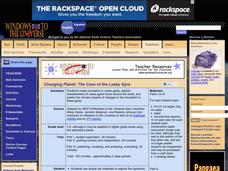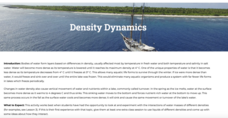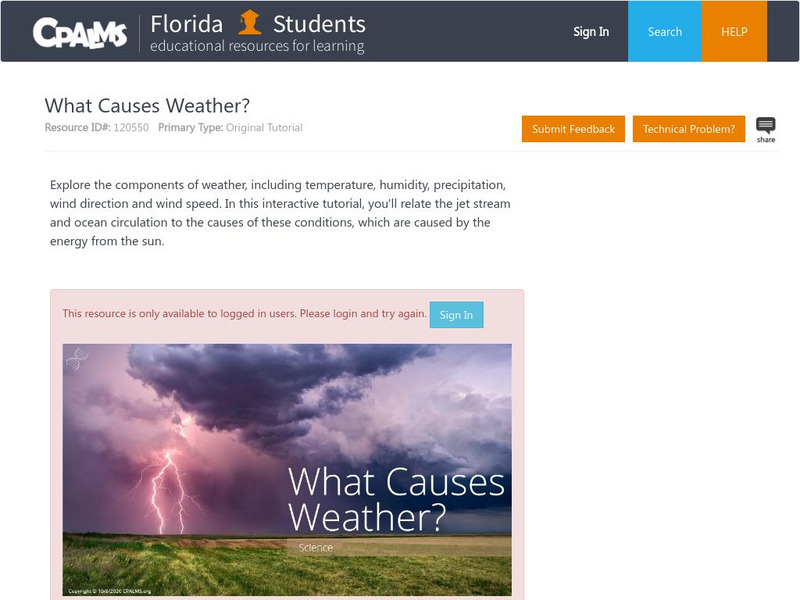Curated OER
Changing Planet: The Case of the Leaky Gyre
The fascinating video "Changing Planet: Fresh Water in the Arctic," introduces your oceanographers to the world's gyres. They learn that melting sea ice is making the gyres larger, and that the changes could, in turn, contribute even...
Curated OER
Density Dynamics
Students set up working models demonstrating lake turnover and the formation of deep water masses in the oceans.
Curated OER
Sea and Ice Salinity
Students conduct an experiment. In this salinity lesson, students learn about sea ice, why it is important and how changing amounts can affect the sea. Students conduct an experiment to find out the effects of salinity on the...
Massachusetts Institute of Technology
Mit: Open Course Ware: Atmospheric and Ocean Circulations
This course outline offers resources focused on the circulation of the atmosphere and ocean.
Society for Science and the Public
Science News for Students: Climate Change Could Stall Atlantic Ocean Current
When carbon dioxide levels rise, the currents slow, which leads to temperatures dropping because of the lack of water movement. Europe could suffer as a result of this change.
NOAA
Noaa: The Ocean's Role in Weather and Climate
A collection of resources - interactive activities and teacher tutorials - on the impact the ocean has on weather and climate.
CPALMS
Florida State University Cpalms: Florida Students: What Causes Weather?
Determine parameters of weather; including specifically temperature, humidity, precipitation, wind direction and wind speed in this tutorial. During this tutorial, you will relate the jet stream and ocean circulation to the causes of...
Massachusetts Institute of Technology
Mit: Blossoms: Will an Ice Cube Melt Faster in Freshwater or Saltwater?
Engage young scholars in the study of the ocean and saltwater with these activities. Students will see that saltwater has different physical properties than freshwater - mainly density. This lesson can serve as a springboard into other...
Other
Earth Science: Earth's Surface and Heat [Pdf]
This textbook chapter looks at the role of temperature in sustaining life on Earth and on weather and climate. It discusses the Earth's movements and the seasons, the circulation of the oceans, wind and weather, and the water cycle....
American Geosciences Institute
American Geosciences Institute: Earth Science Week: Sea and Ice Salinity
Students investigate the effects of salinity on the formation of sea ice, and whether salt water freezes more quickly or more slowly than fresh water.
NASA
Nasa Earth Observatory: Ocean and Climate Fact Sheet
Read about Earth's oceans and the effects that climate have had on the rising temperatures over the past one hundred years. Discover how the Earth's ocean and atmosphere are interlocked so that when one changes, the other is affected.
NASA
Nasa: Ocean Motion: Wind Driven Surface Currents: Upwelling and Downwelling
Explains what upwelling and downwelling of ocean currents are, and the impact of Ekman transport and the Coriolis effect on current movement as well as where they occur. The effects of upwelling and downwelling on water temperature and...
CK-12 Foundation
Ck 12: Earth Science: How Ocean Currents Moderate Climate
[Free Registration/Login may be required to access all resource tools.] Looks at how ocean currents transfer heat from one place to another.
CK-12 Foundation
Ck 12: Earth Science: Deep Ocean Currents Study Guide
This comprehensive study guide covers the main terms and concepts needed for an earth science unit on deep ocean currents. Review questions are included at the bottom of the study guide.













